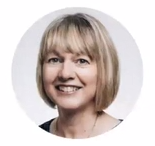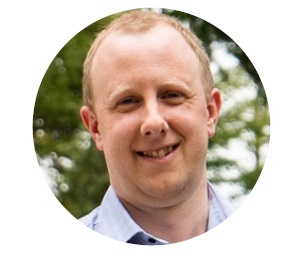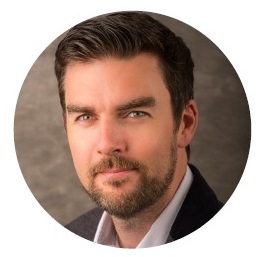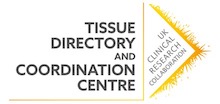Three practical approaches to overcoming challenges in UK Biobanking
Webinar debrief (for part 2)
The UKCRC Tissue Directory and Coordination Centre (TDCC) is collaborating with Scientist.com on a webinar series titled ‘Overcoming Challenges in UK Biobanking’.
The second part of this series took place on Wednesday 20th May, focusing on three practical approaches to overcoming challenges in biobanking. You can listen to part one here. Fifty nine attendees joined the second webinar, coming from a range of universities, patient groups and industry.
The webinar brought together speakers from Wales Cancer Bank, The TDCC and Scientist.com. Each speaker gave a ten minute overview of their stance on the subject before an informative Q&A session.
Some of the key topics to emerge were ensuring discoverability of samples, transparency and how to work with researchers from industry. A summary from each speakers’ contribution is outlined below, as well as the questions and answers from the discussion.

Alison Parry-Jones is Operations Director of the Wales Cancer Bank (WCB), a prospective tissue collection. Alison highlighted four challenges for WCB:
1. Sustainability - Including financial sustainability (cost recovery), operational sustainability (collecting the right samples and ensuring efficient processes) and social sustainability (encompassing all stakeholder groups).
2. Visibility - WCB have their own searchable website for researchers and a dedicated liaison email address. WCB also maintain presence on the UKCRC Tissue Directory, BBMRI Directory, isber-irl and the scientist.com platform. To capture the publications WCB is mentioned in, researchers are asked to acknowledge WCB using their Digital Object Identifier (DOI) in publications.
3. Patient Expectations - WCB cannot promise every donor that their donation will be used, as future research questions cannot be foreseen. Building an archive is valuable though, as recently demonstrated through use of serum samples as controls for COVID-19 work. By taking a percentage of donations, plenty of sample remains for future cancer work. The patient voice is very important and WCB have a patient group advising on new initiatives, as well as lay members contributing to all WCB committees.
4. Researcher Expectations - WCB hold local clinics and roadshows to offer researchers advice on the sample types and volumes they may require. They also offer 1:1 application advice, which speeds up the review process. Some academics expect this resource to be free and whilst this would be unsustainable, WCB do offer a free pilot scheme for researchers needing fewer than 20 samples as a proof of concept before applying for a larger project.


Matt McLoughlin, VP of Compliance & Categories at Scientist.com, reflected that the human sample sector is complex, with big pharma, SMEs, and academia all needing access to samples, and a multitude of biobanks releasing these. Navigating different access procedures and legal departments on both sides of the relationship can slow down scientific advancement.
In 2017 Scientist.com released COMPLi®, a software solution to improve this process. It was made in consultation with industry and the biobank community, to complement each organisations’ own access requirements and policies. COMPLi aims to improve the visibility, traceability and control related to the provision of samples. It facilitates conversations between biobanks and researchers, with each party having total control over who they work with and what samples they access/provide. There is no exclusivity or obligation to meet requests via COMPLi, as it is designed to be an extension to a biobanks existing processes. Through one standard process, time spent on due diligence forms, and contracts (e.g. Material Transfer Agreements) is reduced, whilst maintaining flexibility for both parties.
Questions and Answers
Are you concerned that patients do not support access to samples from industry?
Alison: At WCB we haven't found this to be a concern from patients. It's very clear in our information sheets that samples can go out to any sector, academia or industry, as we are very keen to support the best science, regardless of where that is being carried out. There is an appreciation that new drugs and treatments come from industry. We have only had one or two patients object to use of samples in this way and our consent isn't tiered so if they are uncomfortable with this then we don't consent them. This hasn't been a major barrier to patients consenting.
Phil: I just want to reference the joint patient dialogue work from the Health Research Authority and Human Tissue Authority. They asked patients about this and initially there wasn't support for industry using samples, but when they delved a bit deeper, to discuss what types of industries use samples, patients were very supportive (for example pharmaceuticals, rather than insurance). We have to get the debate right, as you can get very different answers depending how the question is asked. A lot of development in health research is from industry so we need to support this access to samples.
Is it a requirement for those registered with the UKCRC Tissue Directory to make samples available to commercial companies?
Phil: No, when you register you are able to say you are currently unable to accept requests from industry. Our main drive is transparency, ensuring biobanks can fulfill the requests they have selected for. You can register and say you are closed to everybody, the aim is visibility, so it's known you are collecting even if those samples aren't currently available.
The functionality of being able to email the relevant biobank manager on the Tissue Directory is great, but from personal experience you can email the individual listed and never hear back! Is customer management something you will look to focus on with biobanks?
Phil: Yes, indirectly. We don't know which biobanks are being contacted so we don't police non responses or get involved in the access process. If you are contacting biobanks and don't get replies let us know though. There is also a chat functionality on the Directory which you can use to speak to one of the team. Sometimes a member of biobank staff may have moved on so we can chase that up or we may know other biobanks that can support your requests.
Matt: Just to add that one of the features of the Scientist.com platform is a research concierge service that supports both sides, so if there is a breakdown in communications, it can prompt and chase on your behalf.
What proportion of requests you receive are pilots? What proportion of these go on to be full requests? How do they work with regards to MTA's is there a new one for each stage?
Alison: Initially the pilot scheme was very popular with local researchers so we had to implement rules so that a researcher could only have one pilot at a time. Over the past few years around 10% of applications have been pilots but this number has reduced more recently. A couple of those pilots have converted to full projects. Each pilot requires a separate material transfer agreement (MTA), or memorandum of understanding if internal.
Matt: One of the benefits we developed for the Scientist.com platform is that by working under the framework agreement you can work under the same terms, to reduce time spent on MTAs.
What are the key metrics that demonstrate biobank success/utility to its funder?
Alison: Metrics are always a difficult one, partly because a lot of biobanks are set up within academia. Academic type metrics are put on them which are not necessarily the most appropriate measure for biobanks if they are acting as an infrastructure service rather than a research project. I would say that metrics would be the number and type of projects that the biobank supplies, the science the biobank is supporting and ultimately how that creates patient benefit, through new diagnostic tests, treatments or new pathways. It is difficult because as biobanks evolve the metrics do change. When starting off a prospective collection you have to look at numbers of patients consented and samples collected. The important metric is the science being supported and how this translates into patient benefit but these are mid/long term benefits, which can be difficult for funders, especially on a three year funding cycle.
Do you liaise directly with the institutions legal dept to develop MTA’s/contracts? and the same with the researchers end?
Matt: Yes, every researcher agrees to the human biological samples supply agreement with a core set of terms and conditions (T&Cs). For biobanks, part of this process is support liaising with central legal teams to ensure all requirements are addressed. There is a standard set of T&Cs but this can vary for each project if needed. This flexibility is a big benefit of the platform, as well as making the process of offering samples quicker and easier for both sides.
What is the regulatory landscape in the UK regarding re-use of samples - do tissue banks require research project proposal submission for sample/data release? is the re-use subject to new ethical approval?
Phil: The general framework is that an organisation can to apply to be a Research Tissue Bank (RTB) through the Health Research Authority. When a request for samples is received, an RTB can approve researchers' requests without the researcher submitting their own ethics, coming instead under the RTB's ethics.
Alison: The review process at WCB is on merit of the science, with a minimum amount of sample released to ensure any excess in kept in house. A request for further work or further collaboration, would require notification to WCB, to ensure this is within the agreed ethics.
COVID19 - has anything changed in respect to getting and access to samples and data - what about COVID19 samples?
Alison: WCB has stopped consenting patients, our biobank is on complete pause. This is partly due to access to patients, as a lot of cancer surgeries are being postponed. One of the first issues we encountered was in collecting fresh tissue samples, as the histology team is no longer processing fresh tissue samples due to staff safety.
Phil: A significant number of biobanks are closed, in similar situations to WCB. Our current rough estimate is 70-75% closed. If you are looking for samples, visit our website to log requests or see the latest news, as the situation is changing quickly.
Matt: Scientist.com is still receiving requests and there are still companies/biobanks able to release from existing repositories. We are also tracking organisations accessing COVID-19 samples. We haven't seen a diminish of non-COVID-19 related requests.
